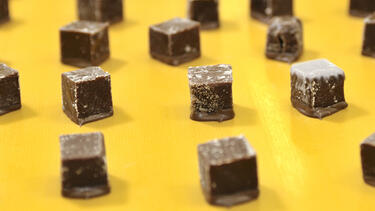Why Consumers Prefer Products Made by Mistake
Companies generally assume that if they make a mistake while designing or manufacturing a product, they should keep that information to themselves. But new research by Professor Taly Reich and her collaborators suggests that revealing mistakes can enhance consumer preference.

Companies are often reluctant to advertise their mistakes. However, new research by Taly Reich at Yale SOM with collaborators Daniella Kupor at Boston University and Rosanna Smith at the University of Georgia suggests that there is a potential upside to companies letting consumers know about them. Across a variety of products, results published in the Journal of Consumer Research find that consumers actually prefer products that were “made by mistake” over identical products that did not involve a mistake in their creation.
Reich and her co-authors first tested this preference by giving consumers a choice between a new type of chocolate and extra money. One group of participants read that the chef that made the chocolate had roasted the beans longer than usual on purpose, while another group read that the additional roasting time was accidental. People who read the “mistake” description were more likely to opt for the chocolate compared to those who read the “intentional” description.
But is this just a case of a “happy accident”? Would consumers still prefer products made by mistake if the mistake made the product worse? To test this, consumers were presented with a drawing with a mark that took away from its appeal, but were either told that the marked artwork was made by mistake (the artist accidently marked the drawing) or intentionally (the artist decided to add the mark). Consumers were more likely to purchase and willing to pay a higher price for the detracted artwork made by mistake compared to the artwork made intentionally. “These findings suggest that consumer interest in products made by mistake is not restricted to cases in which a mistake enhances the product,” Reich says.

The researchers then explored the reasons behind these preferences. They proposed that consumers perceive mistakes to be more improbable than intention because of a well-established psychological phenomenon called the intentionality bias. “People assume that others do what they intend to do,” says Reich. Thus, a product that was made by mistake is deemed as more unlikely than a product that was created without a mistake. This sense of improbability leads consumers to see the product as more unique, which then enhances their preference for it.
To test this explanation, the researchers varied how unique a product was. Consumers learned about a hip-hop song that included the sound of the producer’s breath. When participants thought the breath recording was accidental, they perceived the creation of the song to be more improbable and expressed more interest in buying it. Importantly, the study also included a third condition in which people learned that the song was made accidentally, but that the outcome of the mistake was not unique (i.e., many producers record their breath into their mixes). This time, the song that was made by mistake—and which had a non-unique outcome—did not elicit a greater purchase intent. This finding supports the notion that consumers prefer products made by mistake because they perceive them to be more unique.
Finally, the researchers analyzed sales of vintage photographs on eBay. Controlling for factors such as picture size and date of sale, the researchers found that buyers paid an average of 58% more for photos with blurriness, a double exposure, a finger in the frame, or other mistakes. In other words, photographs with objectively negative properties received a premium relative to those with no such negative property.
While mistakes are typically not perceived positively, these results suggest that companies that hide mistakes might miss an opportunity to attract customers. Learning that product was “made by mistake” increases consumer preference because it enhances perceptions of product uniqueness.“In this way, consumers are consuming not just the product, but also its creation story,” Reich says.